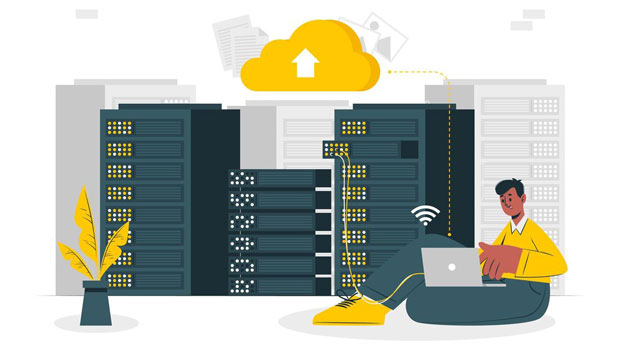In recent years, the use of proxy services has become increasingly prevalent for various online activities, ranging from security concerns to accessing geo-restricted content. Among the different types of proxies available, sock s5 proxies are favored for their versatility and performance. This article compares the latency performance of two popular socks5 proxy providers: PYPROXY and 711Proxy. By evaluating various aspects of latency, such as connection speed, packet loss, and overall reliability, we aim to provide a comprehensive analysis to help clients choose the best service for their needs. This comparison will benefit those who rely on proxies for high-performance applications, ensuring they select the most suitable option. Understanding SOCKS5 ProtocolBefore diving into the comparison between pyproxy and 711Proxy, it is essential to understand the SOCKS5 protocol, as it lays the foundation for their performance. SOCKS5, short for "Socket Secure version 5," is a protocol that facilitates the routing of network packets between clients and servers. It is highly valued for its flexibility, supporting both TCP and UDP traffic, and offering features such as authentication and support for IPv6.One of the key advantages of SOCKS5 over other proxy protocols like HTTP or HTTPS is its ability to handle a wide range of internet activities without the limitations of protocol-specific filtering. It allows users to bypass firewalls and geo-restrictions with fewer compatibility issues. Additionally, SOCKS5 proxies are less likely to cause data corruption or interruptions, making them a preferred choice for high-stakes applications, including streaming, gaming, and data scraping.Evaluating Latency: A Crucial FactorLatency refers to the time it takes for data to travel from one point to another, typically measured in milliseconds (ms). For proxy services, latency is a critical factor because it directly impacts the overall user experience. High latency can lead to noticeable delays in web page loading, video buffering, or application performance.When comparing the latency performance of different proxy providers, several factors must be taken into account:1. Connection Speed: This measures how quickly the proxy server can establish a connection with the client. Faster connections result in lower latency.2. Packet Loss: Packet loss occurs when data packets do not reach their destination. High packet loss can significantly increase latency and degrade performance.3. Network Stability: Stability refers to how consistently the proxy service maintains low latency over time. An unstable network can cause fluctuations in latency, leading to an inconsistent user experience.4. Geographic Proximity: The physical distance between the user and the proxy server can significantly impact latency. Servers located closer to the user tend to have lower latency.Latency Performance of pyproxypyproxy is a popular choice for users seeking reliable SOCKS5 proxy services. It offers a robust infrastructure with multiple proxy servers worldwide, ensuring good geographic coverage. However, its latency performance can vary based on the specific server selected and the user's location.1. Connection Speed: pyproxy generally offers fast connection speeds, especially with servers located in North America and Europe. Users in these regions report low latency and stable connections. However, users in more distant regions, such as Asia or Oceania, may experience higher latency due to the greater physical distance from the server. 2. Packet Loss: Packet loss with pyproxy is generally minimal. Users often report smooth performance with little disruption, even under heavy load. However, during peak times, there may be occasional packet loss, which can cause slight increases in latency. 3. Network Stability: pyproxy excels in network stability, maintaining consistent low latency over extended periods. However, like any service, there are occasional fluctuations during peak usage times, but these are typically brief and do not significantly affect overall performance.4. Geographic Proximity: For users located near pyproxy’s primary servers, the latency is often very low. However, users in more remote locations may experience a slight increase in latency, although it is generally within acceptable limits.Latency Performance of 711Proxy711Proxy is another popular SOCKS5 proxy provider that competes with pyproxy in terms of speed and reliability. Like pyproxy, 711Proxy offers a wide range of servers, but its latency performance may vary based on several factors.1. Connection Speed: 711Proxy’s connection speed is competitive, particularly in regions such as the United States and Europe. However, users in regions like Asia or South America may experience slightly slower speeds due to the geographic distance from 711Proxy’s main server hubs. 2. Packet Loss: In terms of packet loss, 711Proxy offers a solid performance with minimal loss in most regions. However, during peak usage times or under heavy server load, users may experience occasional packet loss, which can lead to increased latency. This is particularly noticeable for users in less-populated regions. 3. Network Stability: 711Proxy generally offers good network stability, but users in regions with limited server availability may notice more fluctuations in latency. For example, users in countries with fewer server options may experience more inconsistent latency compared to users in more densely connected regions. 4. Geographic Proximity: Like pyproxy, the proximity of the user to 711Proxy’s servers plays a crucial role in determining latency. Users located near key server hubs can enjoy low latency, while users farther away may experience higher latency.Comparison of pyproxy and 711Proxy LatencyWhen comparing the latency performance of pyproxy and 711Proxy, several key differences emerge. While both services offer competitive speeds and low latency in most regions, there are some notable distinctions.1. Global Server Network: Both pyproxy and 711Proxy offer a global server network, but pyproxy tends to have a slightly broader selection of server locations, particularly in North America and Europe. This gives pyproxy an advantage in terms of connection speed for users in these regions. 2. Consistency of Latency: pyproxy generally excels in providing consistent latency across various regions. While 711Proxy offers similar performance in regions with high server density, users in more remote locations may experience more fluctuations in latency with 711Proxy compared to pyproxy.3. Packet Loss and Stability: Both services offer minimal packet loss, but pyproxy tends to be more stable overall. During peak usage times, 711Proxy may experience more significant latency spikes and packet loss compared to pyproxy.4. Geographic Considerations: For users located in regions with limited server coverage, such as parts of Asia or South America, pyproxy may offer a more consistent experience. In contrast, 711Proxy may suffer from higher latency and occasional instability in these areas.Conclusion: Which Proxy is Better for Latency?In conclusion, both pyproxy and 711Proxy offer solid performance under the SOCKS5 protocol. However, based on latency, pyproxy generally provides a more consistent and reliable experience, particularly for users located in North America and Europe. Its broader server network, minimal packet loss, and excellent network stability give it a slight edge over 711Proxy.That said, 711Proxy remains a strong contender for users who are located near its key server hubs or who prioritize other factors like pricing and customer support. Ultimately, the best choice depends on the user's specific needs, such as geographic location, connection speed, and performance stability.For users who prioritize minimal latency and a stable connection, pyproxy is likely the better choice. However, for those who are more price-sensitive or have specific regional preferences, 711Proxy might be a more suitable option.
Sep 20, 2025



































































